Listed in order of when each research program begins annually (May-September) on Appledore Island
Isles of Shoals Seabird Ecology and Conservation Program
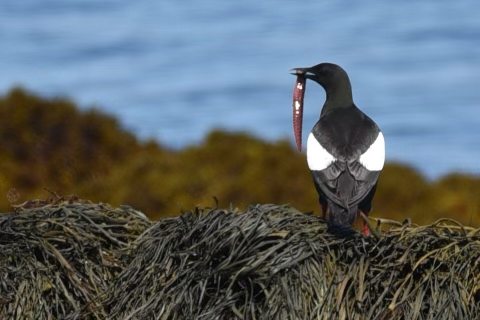
PI: Dr. Elizabeth Craig (Director of Seabird Research, Shoals Marine Laboratory, UNH)
The Isles of Shoals Seabird Ecology and Conservation Program promotes the conservation of aquatic birds in the Gulf of Maine through student-driven research, monitoring, and management. As top predators, seabirds are sentinels of marine ecosystem function and ocean health. They are threatened by environmental contamination, coastal habitat destruction, overharvesting of resources, and climate change. Our team applies insights from seabird ecology to identify conservation challenges and guide management action in the context of a changing ocean.
Opportunities to participate in this research program: Seabirds Ecology & Conservation undergraduate research experience and Seasonal Seabird Technician positions.
Learn more about the Isles of Shoals Seabird Ecology and Conservation Program.
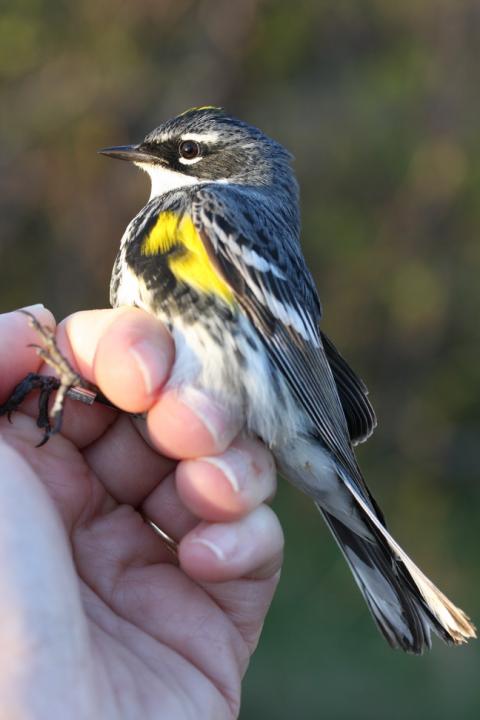
Appledore Island Migration Station (AIMS)
PI: Dr. Sara Morris (Canisius College & University of New Hampshire)
Each year, thousands of songbirds stop on Appledore Island during migration. The Appledore Island Migration Banding Station studies these migrants during both spring and fall migration. The primary purpose of the station is to study the migration and stopover ecology of Nearctic-Neotropical migrants. Over 120,000 birds have been banded since 1981! (The 120,000th banded bird, pictured at left, was a Myrtle or "yellow-rumped" warbler, Setophaga coronata. Photo thanks to Sara Morris.)
For more information, click here to visit the AIMS website.
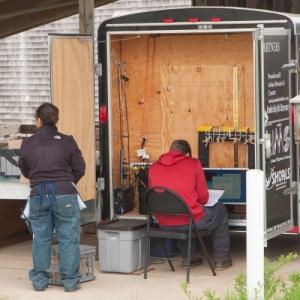
Mobile Avian Recording Studio (MARS)
PI: Dr. Sara Morris (Canisius College & University of New Hampshire)
Based inside a specially-designed, insulated trailer, a team of undergraduates from Canisius College works each summer to examine songbird calling (vocalizations). The MARS trailer acoustically isolates birds, allowing researchers to study a bird's response to sound cues as well as to see what factors may be affecting the likelihood and rate of calling by individual birds.
Muskrat Island: Rodent Ecology, Evolution, & Biogeography
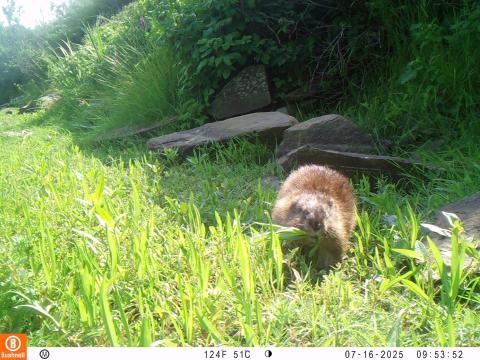
PI: Dr. Alexis Mychajliw (Middlebury College)
Islands have long been used as natural laboratories for studying ecological and evolutionary processes. The Isles of Shoals is home to at least two accidental experiments that span centuries: the introduction of rats (late 1600s) and muskrats (early 1900s). Our research group studies the consequences of these introductions related to changes in rodent behavior, body size, and genetics, as well as how rodents fit within the Shoals ecosystem. Since 2024, we have surveyed rodent populations to better understand their distribution across the island and inform management needs.
Learn more by reading our latest muskrat publication (open access!).
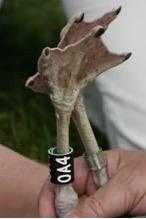
Gull Ecology Research and Gull Banding
PI: Gulls of Appledore Research Team (Dr. Kristen Covino, Dr. Liz Craig, Dr. Nichola Hill, Dr. Sara Morris, Dylan Titmuss)
In order to better study populations of Herring Gulls (Larus argentatus) and Great Black-backed Gulls (Larus marinus), researchers come to Appledore Island to band both adult and juvenile gulls. The overarching, long-term goals of this study are to understand the interactions between Herring and Great Black-backed Gulls, their population trends in the Gulf of Maine, and the effects that these two species have on coastal marine communities of New England. Ongoing research includes studies of breeding success and demography, gull health, stress, and disease, physiology, and behavioral ecology.
Opportunities to participate in this research program: Gull Population Biology Internship
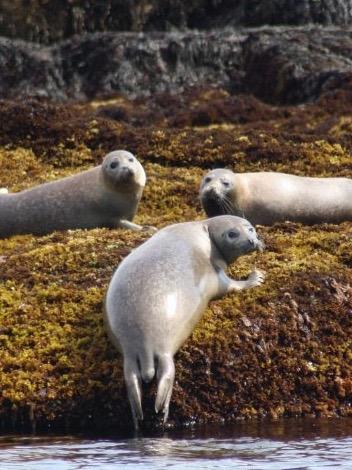
Duck Island Seal Colony Surveys
PIs: Dr. Andrea Bogomolni (NASRC) and Lisa Sette (Center for Coastal Studies)
Since 2011, researchers have conducted boat-based surveys of Duck Island, Isles of Shoals and its surrounding ledges. Photographic data is used to doucment harbor seals (Phoca vitulina) and gray seals (Halichoerus grypus) present in the haul out. The surveys aim to provide an estimate of Isles of Shoals seal population numbers, health of the colony, and evidence of injury and entanglement.
Opportunities to participate in this research program: Marine Mammal Internship
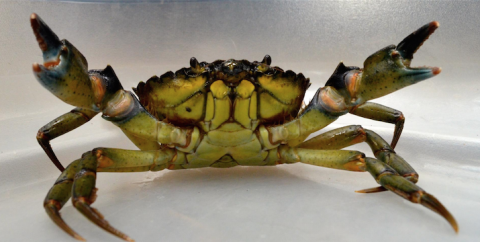
Parasite Ecology Project
PIs: Dr. April MH Blakeslee (East Carolina University) and Dr. Amy E. Fowler (George Mason University)
Parasites represent one of the most ubiquitous and abundant group of marine organisms worldwide. Parasites are an extremely important contributor to species interactions and can be a major driver of evolutionary change. This project studies parasites and pathogens at multiple levels, including their influences on individuals, populations, and communities. The Isles of Shoals represents a natural laboratory for studying the ecology and evolutionary biology of marine parasites, given the abundance of hosts (particularly shorebirds) on the islands that drive parasite prevalence in the region. Research at SML has spanned almost two decades and has included many collaborators and multiple students at both the undergraduate and graduate levels.
Opportunities to participate in this research program: Parasite Ecology Internship
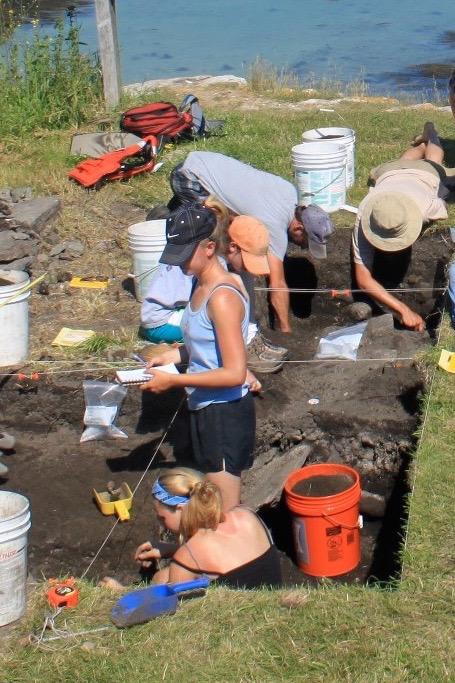
Isles of Shoals Archaeology Project
PIs: Dr. Nathan Hamilton (Univ. of Southern Maine) and Dr. Robin Hadlock Seeley (Cornell University)
The Isles of Shoals are most famous for the colonial fishing station sited on Smuttynose Island that existed in the 17th-19th centuries and whose origin predated the arrival of Puritans to Massachusetts. Further artifacts represent a substantial activity area that appears to date to AD 800-1200 on the basis of artifact styles that include a Levanna point, a side-notched point and a Stemmed point. Excavations during 2009 produced evidence sufficient to designate a prehistoric site, known as the Hubbard-Oberlander Site.
Opportunities to participate in this research program: Shoals History & Archaeology adult education program
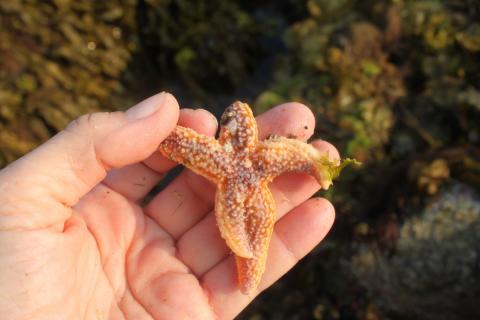
Intertidal Transect Studies
PIs: Dr. Kylla Benes (Univ of Montana), Lauren Pandori (US National Park Service)
SML has accumulated over twenty-five years of data from student transect surveys that detail the distribution and abundance of organisms in both exposed and protected rocky intertidal habitats on Appledore Island in the Gulf of Maine. SML uses the transect studies to teach research methods and focus student observations in the field. Compiling the survey data will allow us to track and document changes around Appledore Island and provide a long-term dataset with baseline information to the broader scientific community. In the past, data was collected by students in Field Marine Science (I and II), and Field Marine Biology & Ecology courses.
SML students and mentors now collect data as part of our Intertidal Ecology Internship.
Past Research Highlights
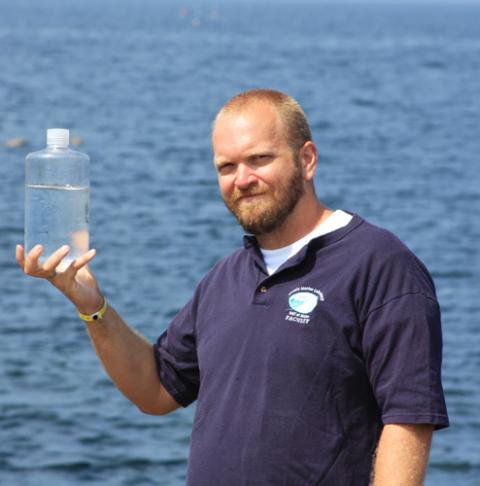
Team Aquatic Virus
PI: Dr. Ian Hewson (Cornell University)
The Hewson Lab constructed two RNA virus metagenomic datasets, one from water collected in Babb’s Cove and the other from RNA viruses taken from the sediments of Babb’s Cove.
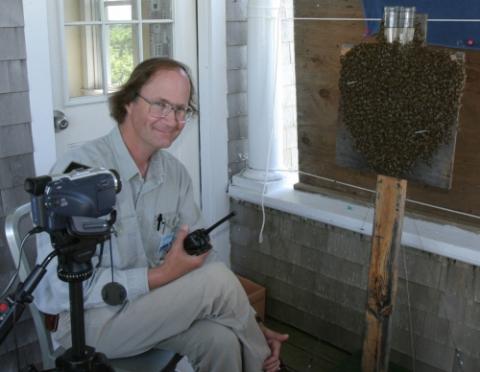
Honey Bee Behavior
PI: Dr. Tom Seeley (Cornell University)
Seeley established honey bees’ criteria for a nesting site and the way in which the scouts explore potential spaces. Check out PBS's NOVA video about the waggle dance!
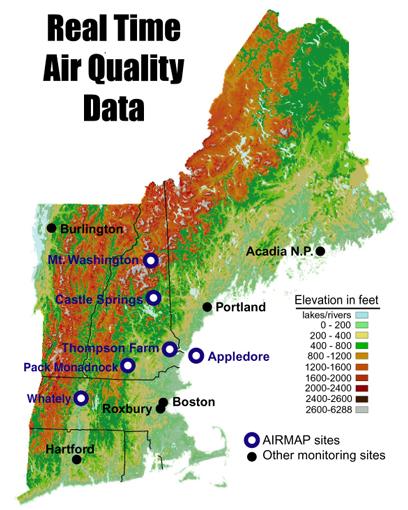
UNH AIRMAP Research Project
- Analysis of existing climate data
- Development of new air quality monitoring programs
- Addressing New England's changing climate and air quality
- Understanding the relationship between air quality and weather
- Determining the causes of climate change in New England
- Part of NASA's Micropulse Lidar Network (MPLNET) (select "Appledore Island" from locations menu)
- Lidar Observations of the Kasatochi Plume at MPLNET's Appledore Site (PDF)
- ICARTT 2004: International Consortium for Atmospheric Research on Transport and Transformation
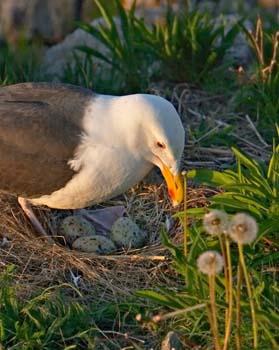
Gull Nest Monitoring
PI: Dr. David Bonter (Cornell Lab of Ornithology)
As part of an undergraduate internship program funded in part by the Cornell Lab of Ornithology, student researchers spent 10-weeks each summer monitoring the nests and chicks of Herring Gull pairs (Larus argentatus) and Great Black-backed Gull pairs (Larus marinus) on Appledore Island. Nests were monitored from egg lay to fledge.
This work continues as the 'Gull Ecology Research and Gull Banding' project listed above, and as the Gull Population Biology Internship.
